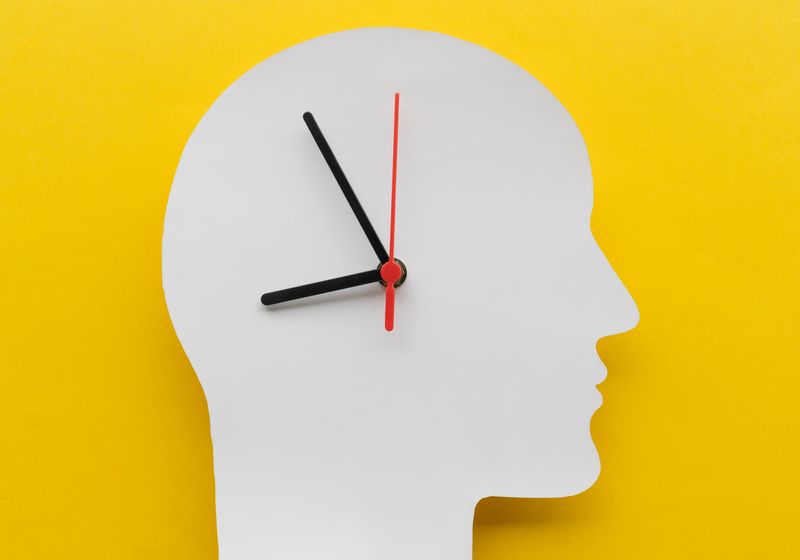When people shift their daily routines by an hour, they create a mismatch between their social lives and their internal clock.
As countries around the world begin to turn their clocks back an hour, some people may rejoice at the extra time in bed while others might mourn the loss of evening light. For many sleep and circadian rhythm biologists, the end of daylight saving time is an overall positive thing. In fact, many groups, including the Society for Research on Biological Rhythms, have petitioned governments to adopt permanent standard time to improve public health.
Kevin Koronowski studies how circadian rhythm influences metabolism and how disruptions in this timing leads to metabolic diseases.
UT Health San Antonio
“Basically, that’s because the body’s clock and social clock will match most closely under a standard time,” said Kevin Koronowksi, a chronobiologist at the University of Texas Health Science Center at San Antonio and member of the Society for Research and Biological Rhythms. Koronowski studies the relationship between circadian rhythm and metabolism.
In humans, the circadian rhythm describes the organization of physiological processes that occur on a roughly 24 hour cycle, creating a biological clock. Although the body internally regulates the genes related to coordinating cells’ clocks, circadian rhythm synchronizes to the light-dark cycles of people’s external environment.1,2 For example, melatonin production increases as the day draws to a close, while cortisol levels rise in the morning.3,4
Koronowski said that a biological clock could have many evolutionary purposes, such as anticipating food. Or, he added, “This could be separating opposing processes. For example, in metabolism, you wouldn’t want to synthesize lipids and consume lipids at the same time, but as an organism, you need the capability to do both. So, circadian rhythm would give you an opportunity to kind of separate those processes and align them to the optimal time of day for each of those.”
Of course, the amount of light that people experience changes throughout the year. The biological clock, though, is plastic enough to account for these gradual shifts, Koronowski said. “But daylight savings time makes it more difficult to adapt to those seasonal changes,” he added.
Unlike the progressive change in light that occurs as the Earth revolves around the sun, jumping ahead and falling back an hour creates a mismatch between the clock our cells run on and the one by which our social habits operate. “It might seem small, to only have that one or two hour mismatch, but there are studies documenting a host of changes and issues with daylight savings time,” Koronowski said.
Indeed, researchers showed that that transitioning to daylight saving time interrupts sleep patterns, increases stroke and cardiac arrest risk, and leads to more human-errors in the workplace.5-8 These transitions also decreased glucose control in people with type 1 diabetes.9 “If you’re to shift this rhythm even by one hour in either direction, you’re going to feel less tired at night or more tired in the morning. So, this is one way that our biological rhythms could have a real impact on our behavior, alertness, functioning in those early days or even during the entire daylight savings time,” Koronowski said.
- Rosenwasser AM, Turek AW. Neurobiology of circadian rhythm regulation. Sleep Med Clin. 2015;10(4):403-412.
- Patke A, et al. Molecular mechanisms and physiological importance of circadian rhythms. Nat Rev Molec Cell Biol. 2020;21(2):67-84.
- Albrecht U. Timing to perfection: The biology of central and peripheral circadian clocks. Neuron. 2012;74(2):246-260.
- Wright Jr KP, et al. Influence of sleep deprivation and circadian misalignment on cortisol, inflammatory markers, and cytokine balance. Brain Behav Immun. 2015;47:24-34.
- Romigi A, et al. The effects of daylight saving time and clock time transitions on sleep and sleepiness: A systematic review. Sleep Med Rev. 2025;84:1012161.
- Hook J, et al. Daylight savings time transitions and risk of out-of-hospital cardiac arrest: An interrupted time series analysis. Resuscitation. 2021;168:84-90.
- Sipilä JOT, et al. Changes in ischemic stroke occurrence following daylight saving time transitions. Sleep Med. 2016;27-28:20-24.
- Kolla BP, et al. Increased patient safety-related incidents following the transition into daylight savings time. J Gen Int Med. 2020;36(1):51-54.
- Angelino S, et al. Sleep quality and glucose control in adults with type 1 diabetes during the seasonal daylight saving time shifts. Diabetes Res Clin Pract. 2024;217:111859.

